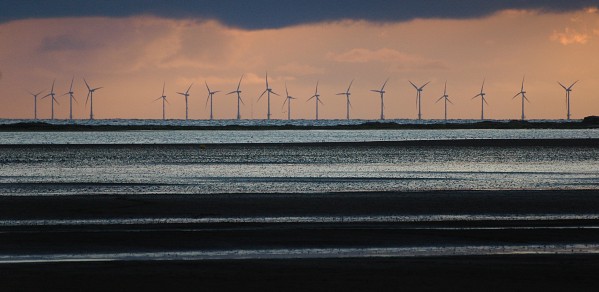
When Professor Richard McMahon closes his eyes, he sees a future powered by the wind. He envisions a day when wind turbines are as common as trees in the courtyards at the University of Cambridge.
Let’s let the wind have a go at it, and then, with Texas Instruments, we can put forward an offering to companies making small wind turbines
Professor Richard McMahon
He sees small generators built to be aesthetically pleasing as well as energy efficient. While thousands of massive wind turbines now dot the countryside of England, producing renewable energy with impressive results, small wind turbines in more urban settings don’t perform nearly as well. As Richard, a senior lecturer in the Department of Engineering put it: “small-scale wind turbines are quite costly, noisy and complex systems that aren’t terribly reliable.”
“It is a bad place to be to have something that is expensive and doesn’t perform well,” said Richard with a bit of a chuckle.
Richard, PhD students from the University of Cambridge and Texas Instruments (TI) have teamed up to make small-scale wind turbines a viable energy option. But before they even got started with their research, they hit a bump in the road – there was no sufficient system to simulate the wind. Without a wind emulator, the team could not conduct any sort of testing and were left to the whims of Mother Nature. With no other options, the team decided to build its own wind emulator to mimic wind speeds and direction.
“In order to test systems, we need reproducible conditions. It is very hard to go outside and get reproducible wind conditions. You might be waiting a very long time,” said Richard.
With the wind emulator in place, the team looked at optimisation opportunities in how the energy is transferred from the turbine to the generator and then onto the electrical grid. While engineers can control a lot of these factors, the challenge for the team came in the lack of control over wind speed or direction.
“How do you get the maximum power from the wind and put it on the grid when it can quickly change in different ways,” said Dave Freeman, TI Fellow and chief technologist for TI’s Power Management business.
The team focused on sensors in the wind turbine, finding many of the sensors involving turbine and generator speed added unnecessary cost and unreliable mechanics. The team is experimenting with having the generator controlled by a third-party real time operating system with a goal of putting the system onto a TI microcontroller or digital signal processor. They believe moving the system onto a microcontroller or digital signal processor could make small scale wind turbines less expensive and more reliable.
After more extensive testing with their newly built wind emulator, the team hopes to take their innovation into the real world and possibly make small-scale wind turbines a commercially attractive option.
“Let’s let the wind have a go at it, and then, with TI, we can put forward an offering to companies making small wind turbines,” said Richard.
Dave said the collaboration with the University of Cambridge has been a big win for everyone involved. He said the research could be done in Kilby Labs, but it was a much better use of resources to work with a university that already had experience and expertise in the wind energy field. TI provides funding and know-how with the chips and control systems while the University of Cambridge offers wind energy expertise and access to students with bright engineering minds.
“This allows developing engineers to work with us and we get to know them. They are working on something that is relevant to us and we are creating not only relationships but a future home for them, and I think it is an excellent symbiotic relationship,” said Dave.
Due to the relationship between TI and the University of Cambridge, small-scale wind turbines may no longer be labeled, ‘quite expensive, noisy, and complex systems that aren’t terribly reliable.’ Soon, Richard might not have to close his eyes to see wind turbines in his neighborhood.

